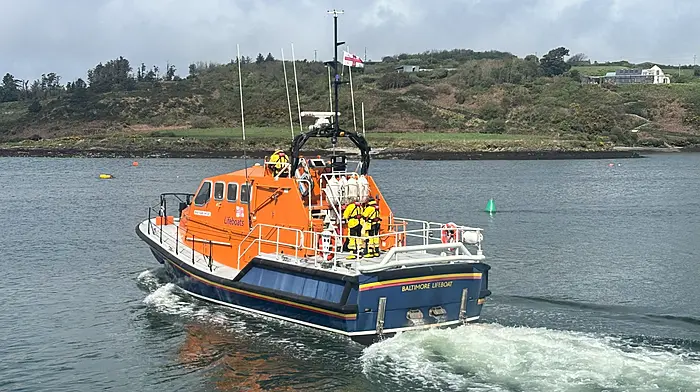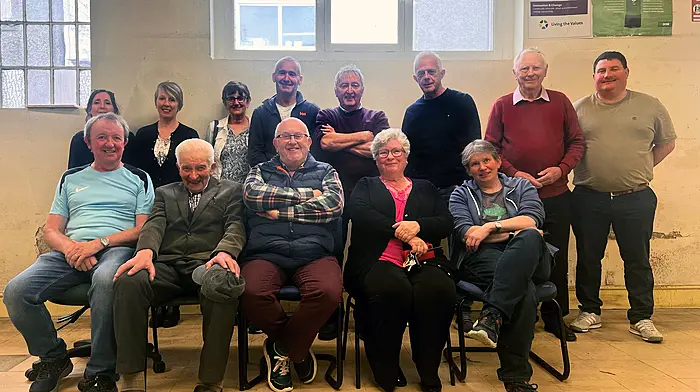A West Cork islander has questioned why Rathlin, off the north coast, is seeing significant population growth, while one of its southern counterparts is struggling to keep its three-pupil school open.
THE demographics of Cape Clear – Ireland’s most southerly inhabited island – are in stark contrast to its northernmost counterpoint, Rathlin Island, with population falling on the West Cork island.
Research by Cape Clear islander Seamus Ó Drisceoil shows that the population of Rathlin has seen steady growth from 100 to 160 over the period of 2000 to 2024.
Meanwhile, the population of Cape Clear has declined by 25% from 2016 to 2022.
‘The islands have much in common historically and culturally including both being important bird watching destinations,’ Seamus told The Southern Star. ‘But since the turn of the century, the two islands have had dramatically divergent experiences.’
Citing Cape Clear’s local national school – which has just three pupils – Seamus said it is in imminent danger of closing, while the school on Rathlin has expanded into the Parish Hall.
Rathlin is looking forward to further population increases, while Cape Clear is facing a further demographic decline.
Seamus said he was keen to research why these very similar islands have such different experiences?
‘Both islands have seen significant investment in infrastructure and essential services with over €15m invested on Cape Clear in recent years,’ he said.
‘And, in both jurisdictions – north and south – public policy is to maintain and support island communities.’
Seamus, in particular, mentions The Living Islands Policy which was launched by the Government in June 2022.
After assessing the changing fortunes of both islands, Seamus concluded that the stark difference comes down to one key factor – housing.
In 2004, Rathlin Island got two significant social housing developments, and a third development is due to be completed in September of this year.Over the same period, Seamus said Cape Clear Island has seen ‘nothing of the kind’.
The housing situation has been allowed to deteriorate to the current crisis level, where the school was unable to recruit a qualified teacher, he said.
As a result, families are being forced to leave Cape Clear while new families are arriving all the time on Rathlin.
Faced with what Seamus described as ‘this catastrophic failure of public policy’, he said the island’s co-operative bought a field for gateway housing, which is located just 200m from the island school.
Cape’s co-op applied for planning permission in 2022 and was asked by Cork County Council to withdraw the application pending the launch of the Living Islands Policy.
The co-op renewed its planning application in November 2023 by requesting a pre-planning meeting, but Seamus said this was refused.
In his research, Seamus noted that Rathlin, at the turn of the century, had only a couple of applicants on its housing list. ‘Local policy makers realised that people would not apply to be on a housing list on an island unless there was a reasonable prospect of a house becoming available, so an improved and more accurate methodology was applied,’ he said.
The ‘latent demand methodology’ posed the question how many people would consider applying for a house if this was backed up by a list of potential houses becoming available?
The analysis demonstrated a clear demand for social housing on Rathlin Island, should it become available.
As a result, two new housing schemes were successfully completed, and fully subscribed.
The third development, which is expected to be completed within the next five months – is also expected to be utilised to the full.
Following its success on Rathlin, Seamus said the latent demand methodology is now being used to assess potential demand for social housing in other rural areas.
Seamus used two photographs to illustrate the contrast on both islands: one is of a housing development nearing completion; and the other is an overgrown development site near Cape’s national school, which was recently refurbished primary school but is not ‘on borrowed time.’
A spokeswoman for Cork County Council said it does not comment on pre-planning issues, meetings or correspondence.
However, she did point out that the authorities are – under a review of the role of Registered Friendly Societies – examining way of allowing such societies to become approved housing bodies.
She noted the potential to establish an island-focused approved housing body that would provide gateway housing on islands, including medium-term accommodation to attract and cater for new residents, including essential workers, such as teachers, nurses and doctors, and other service providers.










